Sweet William Dianthus 'Diane' (p)

ABOUT
Dianthus 'Diane', commonly known as Diane's pinks, is a charming perennial that is known for its distinctive appearance. The plant produces an abundance of flowers that are often characterized by their fringed petal edges, giving them a somewhat lacy look. The flowers of Diane's pinks usually display a striking combination of colors, often including shades of pink, red, or white. Some varieties may even have multiple hues on each petal, adding to their vibrant aesthetic. The foliage of Diane's pinks is another attractive feature, typically consisting of slender, bluish-green leaves that form neat, compact mounds. These leaves provide a lovely backdrop for the colorful blooms, which sit atop slender stems, adding a sense of vertical interest and movement. Diane's pinks typically exhibit a pleasing, spicy fragrance, which makes them a favorite for gardeners who appreciate scented plants. This fragrance also attracts pollinators such as bees and butterflies, adding to the dynamic life of your garden. Overall, Diane's pinks' appearance, with its bright, fringed flowers and attractive foliage, creates a striking visual impact, making it a popular choice for borders, rock gardens, and as a ground cover in outdoor spaces. Despite its delicate look, Diane's pinks are known for being tough and resilient, able to bring beauty and interest to garden settings with its distinctive appeal.
About this plant
 Names
NamesFamily
Caryophyllaceae.
Synonyms
Diane's Pink.
Common names
Dianthus 'Diane'
 Toxicity
ToxicityTo humans
The plant commonly known as Sweet William is generally not toxic to humans. It is not known to cause serious symptoms of poisoning if ingested. However, individuals with sensitive skin may occasionally experience dermatitis from handling the plant due to its saponin content.
To pets
Sweet William is not considered highly toxic to pets. If ingested in large quantities, it may potentially cause mild gastrointestinal upset in some animals, symptoms of which could include vomiting or diarrhea. It is not typically associated with severe poisoning or life-threatening consequences.
 Characteristics
CharacteristicsLife cycle
Perennials
Foliage type
Evergreen
Color of leaves
Blue-green
Flower color
Pink
Height
1 foot (30 centimeters)
Spread
1 foot (30 centimeters)
Plant type
Herb
Hardiness zones
6
Native area
Europe
Benefits
 General Benefits
General Benefits- Aesthetic Appeal: They add vibrant color and visual interest to gardens and landscapes with their stunning pink flowers.
- Fragrance: Dianthus 'Diane' emits a pleasant spicy clove-like fragrance that can enhance the sensory experience of a garden.
- Low Maintenance: This plant is known for being easy to care for, requiring minimal upkeep once established.
- Drought Tolerance: Once established, they have good resistance to short periods of drought, making them suitable for xeriscaping.
- Pollinator Friendly: The flowers attract pollinators such as bees and butterflies, aiding in the pollination of surrounding plants.
- Long Blooming Period: They boast a lengthy blooming period, providing color and interest throughout the growing season.
- Versatility: Suitable for a variety of garden applications including borders, containers, and as edging plants.
- Cold Hardy: They are capable of withstanding cooler temperatures, making them appropriate for cooler climates.
 Medical Properties
Medical PropertiesThis plant is not used for medical purposes.
 Air-purifying Qualities
Air-purifying QualitiesThis plant is not specifically known for air purifying qualities.
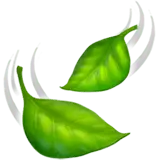 Other Uses
Other Uses- Carnation petals can be used to create a natural dye for fabrics, providing a range of colors from pale yellow to green depending on the mordant used.
- Carnations can play a role in educational settings, such as biology classrooms, where they are used to demonstrate capillary action by changing the color of their petals when placed in dyed water.
- The clove-like scent of carnation flowers can be harvested to make essential oils or scented sachets for use in aromatherapy or as natural air fresheners.
- They can be used in potpourri mixes along with other dried flowers and spices to add fragrance to a room.
- Carnations can serve as natural pest repellents; they are known to deter some types of insects when planted in gardens or placed indoors in bouquets.
- The flowers can be pressed or dried to create lasting decorations for scrapbooking, card making, or decoupage art projects.
- Carnation petals are sometimes used in culinary applications for decorating desserts or as an ingredient in some sweet dishes for their subtle flavor.
- They can be crystallized with egg whites and sugar to create elegant edible decorations for cakes and pastries.
- They are used in the craft of flower arranging, teaching symmetry, balance, and color theory in addition to creating beautiful displays.
- Carnations can serve as bio-indicators for soil acidity, as they thrive best in slightly alkaline to neutral soil, indicating the need for soil amendment if they fail to flourish.
Interesting Facts
 Feng Shui
Feng ShuiThe Carnation is not used in Feng Shui practice.
 Zodiac Sign Compitability
Zodiac Sign CompitabilityThe Carnation is not used in astrology practice.
 Plant Symbolism
Plant Symbolism- Love: Dianthus flowers are often associated with love due to their vibrant colors and sweet fragrance, which can evoke feelings of passion and affection.
- Admiration: The name "Dianthus" comes from the Greek words for "divine" and "flower," indicating that the flower is revered and admired for its beauty.
- Pure Affection: Carnations, a member of the Dianthus family, are traditionally given to convey pure love and good luck, suggesting a deep, platonic admiration.
- Boldness: The bright colors and distinctive patterns of Dianthus blooms can symbolize boldness and daring, embodying a challenge to convention.
- Protection: Historically, Dianthus have been planted in gardens to ward off negative energy and protect the home, symbolizing a barrier against evil.
 Water
WaterSweet William should be watered deeply once a week to encourage proper root development, equating to approximately one inch of water. During hot, dry weather, increase watering frequency to twice a week, ensuring the soil becomes moist but not waterlogged. Overhead watering should be avoided to prevent foliage diseases; instead, water at the base of the plants. A good approach is to provide about 0.5 gallons per square foot every week, adjusting based on rainfall and temperature conditions.
 Light
LightSweet William thrives in full sun, receiving at least six to eight hours of direct sunlight each day. The ideal spot for the plant should be bright and receive morning light, which is less harsh than the afternoon sun. While it can tolerate light shade, too much shade can lead to leggy growth and fewer flowers.
 Temperature
TemperatureSweet William prefers a moderate temperature range, thriving best when daytime temperatures are between 60 to 70 degrees Fahrenheit and nighttime temperatures do not drop below 40 degrees. They can survive light frosts and temperatures down to about 20 degrees, but prolonged exposure to heat above 80 degrees may cause stress.
 Pruning
PruningPrune Sweet William to promote bushier growth and encourage more blooms. Deadheading, or removing spent flowers, should be done regularly to prolong flowering. The best time to prune is after the first flush of blooms begins to fade. Cut back the stems by one-third to one-half in late summer to rejuvenate the plants for fall flowering.
 Cleaning
CleaningAs needed
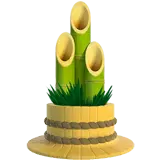 Soil
SoilSweet William prefers well-draining, loamy soil with a neutral to slightly alkaline pH between 6.0 and 7.5. A mix containing garden soil, compost, and perlite or sand would provide good drainage and nutrients.
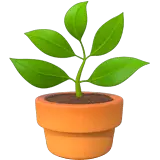 Repotting
RepottingSweet William doesn't require frequent repotting and does well if repotted once every 2-3 years or when it outgrows its current container.
 Humidity & Misting
Humidity & MistingSweet William thrives in average humidity conditions; it does not require high humidity and can tolerate drier air typical in household environments.
 Suitable locations
Suitable locationsIndoor
Place Sweet William near a sunny window; water when topsoil is dry.
Outdoor
Plant it in a sunny to a partially shaded area with well-draining soil.
Hardiness zone
3-9 USDA
 Life cycle
Life cycleCarnation 'Diane' begins its life cycle with seed germination, typically in early spring under appropriate temperature and soil conditions. It then progresses to the seedling stage, where the first true leaves develop and the plant establishes itself. As it enters the vegetative stage, it produces a clump of foliage and stems, growing steadily in size. The next crucial phase is the flowering stage, usually in late spring to summer, where it forms distinctive pink or red blooms that attract pollinators and are also favorable for cutting and ornamental use. After pollination, the plant may produce seeds, completing the reproductive cycle, although many cultivated varieties are propagated vegetatively. As a perennial, Carnation 'Diane' will enter a period of dormancy in the winter months, only to resume growth the following spring.
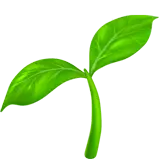 Propogation
PropogationPropogation time
Spring-early summer
The Dianthus 'Diane', commonly known as Pink 'Diane', is often propagated through the method of cuttings, which is the most popular method for this plant. The ideal time for taking cuttings is in late spring or early summer when the plant is actively growing. To propagate Pink 'Diane' by cuttings, select healthy, non-flowering stems and snip off a segment about 4 to 6 inches (approximately 10-15 cm) in length. These cuttings should be taken just below a leaf node, and the lower leaves should be removed to expose a section of the stem. The cut end can then be dipped in rooting hormone to encourage root development and planted in a well-draining soil mix. The pot should be placed in a bright location but out of direct sunlight, and the soil should be kept moist until the cuttings have rooted, which typically takes a few weeks. Once the roots are established, the new Pink 'Diane' plants can be transplanted into individual pots or directly into the garden.

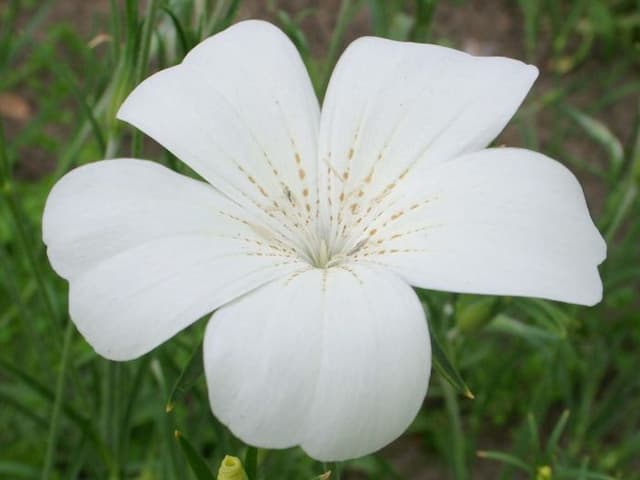





![Pink [Bubblegum]](/_next/image?url=https%3A%2F%2Fplants-admin.emdemapps.com%2Fimages%2Fplants%2F%2Fimages%2F604b596f31cbb.png&w=640&q=75)

